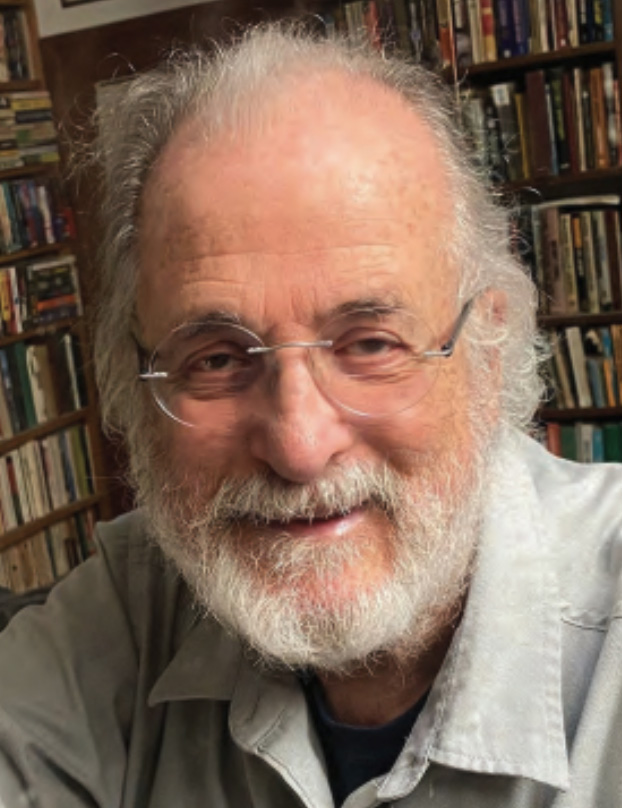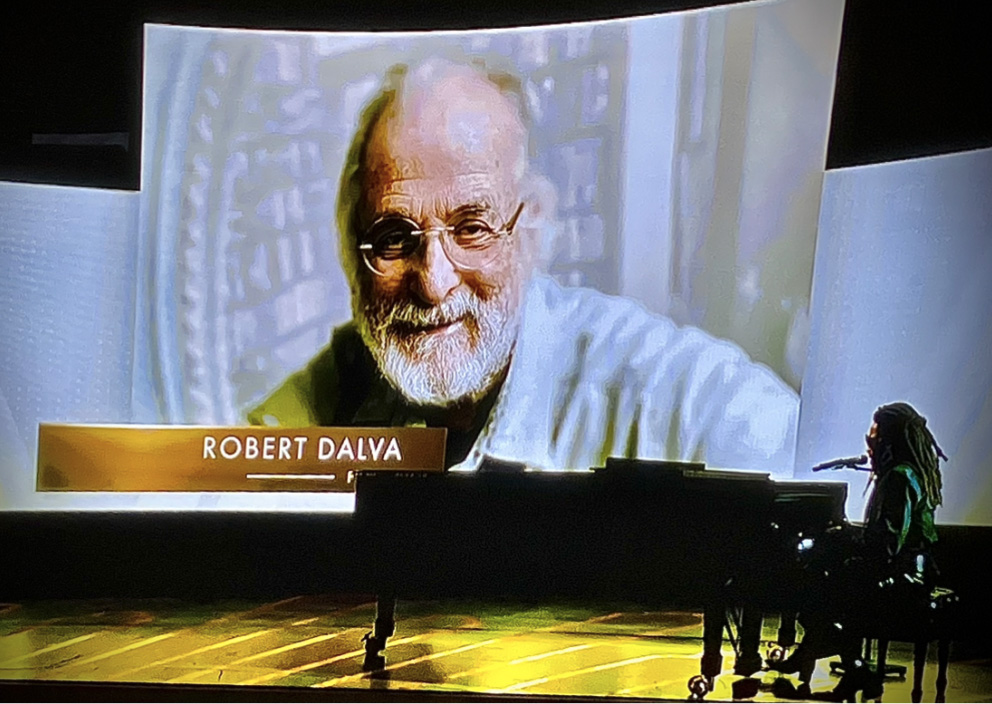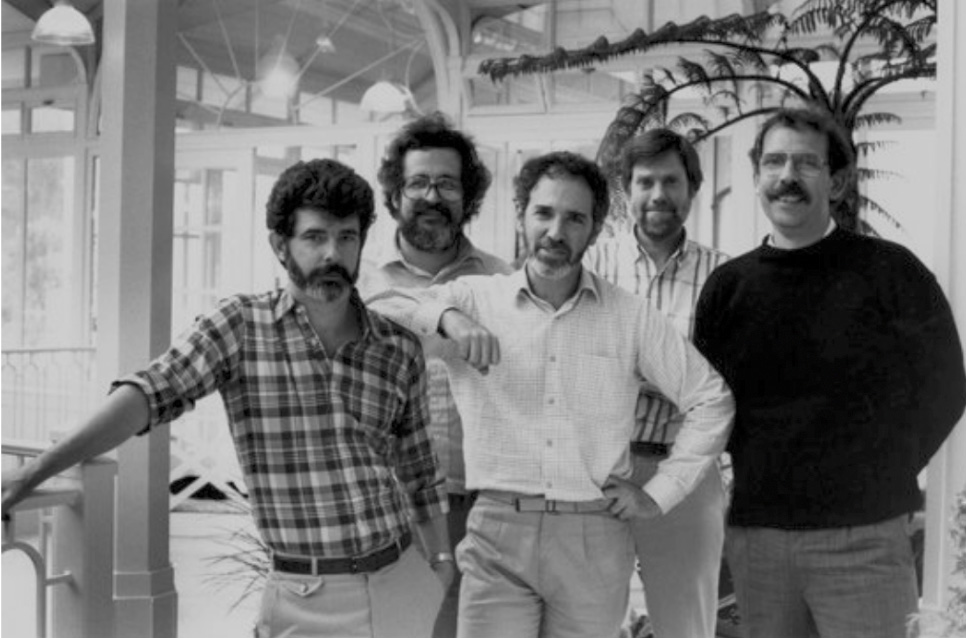
Robert Dalva (1942 – 2023)
Guest post: Gary Weimberg is the founder of Luna Productions and the co-producer/co-director/editor of “My Love Affair with the Brain: The Life and Science of Dr. Marian Diamond.” (Here are our rules for guest posts.)
Have you ever thought about the timeline? It’s right there in front of your face all day long while you edit? How many hours/days/years have we all stared at the timeline and never thought about it?
Think about it now. Before the timeline, what was there? The answer: Nothing.
The timeline is the absolutely essential central feature of every single computer-based editing software ever. It seems so natural and obvious and basic that, if you are like me, you never imagined that someone created it.
Well, someone did. My friend Bob Dalva was that guy.
Bob was a true film maker – an editor, cameraman, and director; nominated for an Oscar for editing The Black Stallion (1979) with other significant credits including Star Wars Episode IV: A New Hope,, Jumanji, and Captain America: The First Avenger.

Robert Dalva honored at 2023 Oscars.
He was honored last year at the 2023 Oscars. It was a bittersweet moment for those of us who knew him because there he was – name and photo – included in the montage of the dead, the segment of the awards showing industry heroes and titans who’d passed away in the previous year.
Now, as Oscar season rolls around, I remember him once again and I’d like to share the story he told me. It deserves its rightful place in the history of editing and, indeed, in the history of cinema itself.
Rewind with me to the year 1980. This is before Avid, before Final Cut Pro, before any software-based editing whatsoever. Computers just weren’t powerful enough (yet) to edit picture or sound. This is the time of the first mass-market computer ever, the Commodore 64; and the first color computer, the Apple II, shipped with … gasp … 4KB of RAM (not a typo, actually 4KB, but expandable to 48KB!!)

The ol’ gang. From left: George Lucas, Robert Dalva, Matthew Robbins, Hal Barwood, and Walter Murch, adjacent to the library.
But George Lucas believed something could be done and created a spin off company, Droidworks, and staffed it with talented engineers tasked with creating a non-linear editing system to be called the Edit Droid. They spent a lot of time and a meaningful pile of cash and after 6 months had something that didn’t work very well at all. They called in some editors for feedback, including Bob Dalva.
Bob struggled with the interface for some time but, frustrated, he asked the engineers how you slip the sound track. They didn’t understand what he was talking about.
He explained: picture and sound are different. Editing is about moving them around separately. A gunshot can play before the actor stands up, or after. The dialogue can be slipped to before the phone rings, or after.
The engineers still didn’t understand.
Bob grabbed a piece of paper. “Let me draw you a picture. Here is a reel of film” he said and drew two long parallel lines. “This represents the image. Let’s say you want to cut, here.”
He drew a dramatic vertical slash.
“Now, here is the sound track” and he drew two more long parallel lines. “Lets say you want to cut the sound here…” and drew another dramatic vertical slash in a different spot, “… and you want to move that up, slip it to where the picture cut is.”
The engineers stared at the piece of paper for a while. Now they got what Bob was talking about. The drawing made it easy to understand.
“We gotta do something about this” they said and asked if they could take that sketch with them.
“Sure.”
Unknowingly, Bob had invented the timeline.
A month later, the engineers returned with a new prototype for him to test. And lo… the team designing the user interface had folded his drawing into the heart of the machine they were creating.
There were these long parallel lines for image. There were these other long parallel lines for sound. There was the vertical position marker for where you were at in the film.
Bob looked for a long moment; “What do you call this?”
“We call it the ‘timeline’” they said.
And the rest is history.
REFERENCES
OTHER STORY LINKS
18 Responses to Tribute: The Man Who Invented the Timeline
Great article. I never before made the connection between a strip of film and our timelines.
Mary:
I agree. In retrospect this is so obvious. But making that initial leap was a stroke of genius.
Larry
Warren Nelson emailed me this comment.
Mary’s comment on your “beginning of the timeline” story made me feel VERY old! She must be pretty young. 🙂
I remember what absolute joy it was to get to use a Steenbeck flatbed film editor! I cut my first four or five films on a synchronizing block using hand-turned reels. AND I actually used editing “bins,” literally cloth-lined bins with hooks above the bins for holding film clips on wheels so they could be easily moved from one editing room to another. (BTW, I am “young” enough that I never had to endure a Moviola!)
I wake up every morning thankful for the advances of the digital age. I’m sitting in a coffee shop writing this on my new 14″ MacBook M3 Pro which gives me more capabilities to create than any of the multimillion dollar post facilities that I edited in during the late 70s and into the 80s.
Warren:
Thanks for your comment. I remember those cloth covered bins and, while I used them, I was more focused on 2” video tape playing on tape machines the size of refrigerators.
That’s a skill set that will never come again. I miss it, but don’t want to go back to it.
Larry
What a great story! Having begun my career editing film, moving to cutting video was a colossal pain in the…
After several years of rough cutting on various 3/4″ systems, I discovered the Montage! It consisted of 24 Betamax machines controlled by a minicomputer. I’ll spare you more details but suffice it to say, it had a rudimentary “timeline” that made NLE possible.
It cost in the low six figures but it was stupendously better than the linear 3/4″ offline systems I’d been using. You still had to output an EDL to a huge floppy disk for the online edit.
Next came the EMC2, a PC-based NLE. I was on a first name basis with the developer (we bought the 4th system he built while the whole thing was still beta) and, while a bit clunky in a number ways, it worked, including outputting an EDL for online editing. We had a box fan to the side of the PC because it used a magneto-optical drive for storage and they laser it used produced a lot of heat.
Finally, an audio engineer introduced me to the first version of FCP. I was dubious, at first, because it only produced very low res images and, at that point, it had no way export an EDL which made it useless for my workflow.
Long story short, I left video production to work elsewhere because the digital revolution and it lightning speed of change made it financially impossible to keep up with digital tech in my relative small market town.
Several years later, the medical clinic I was managing needed a CD-ROM produced for a training video we needed. I did some research and discovered that Final Cut work GREAT for developing and delivering CD-ROM projects. And the rest is history!
Thanks so much for telling the story that made all this possible!
Warren:
A lovely comment. Memories of the past help us to celebrate what we have in the present.
Thanks for sharing.
Larry
EMC2 brings back memories! That was my introduction to NLE. I used it for about three years to cut a weekly business journal for a company. After that, we moved to Dvision and after that I primarily worked with Final Cut. Recently however I used Premiere on the side to use the (automated) transcript editor for speed. An interesting development and for the first time since EMC2 it’s weird to not look at a timeline first but cut in a piece of text.
“Full Metal Jacket” was edited on a Montage:
https://www.youtube.com/watch?v=xqtbU1F07m4
FWIW, the version with a bitmap display you could mark up used the same Motorola 68000 CPU as the original Mac. Incredibly impressive and forward-looking for its time.
I dunno…to me it was always intuitive, whether I was looking at the list of numbers on my GVG-141 screen, or imagining the helical tracks on my tapes, that I was looking at a segment of time that started at 0 and ran to the end of the program. I feel that, similar to the Wang Word Processor, the most significant development was the ability to move clips about randomly within that strict order of time.
Mike:
Yup, NLEs created the whole “non-linear nature of time.” The timeline is a great visualization tool, freely moving clips on the timeline released creativity, along with transitions without grease pens and unlimited copies of master clips are other key benefits of that initial digital transformation.
Larry
I remember when the Edit Droid was introduced at NAB and we had to stand in line to wait to go into this room. The best part was that the Trash Can on the lower right corner was the icon of Darth Vaders helmut. Cant remember the year, but it was amazing.
I remember the first Avid demo I saw. I was with my editor colleague and we could hardly believe what we were seeing – even though as I recall the demo was full of hiccups and glitches. It was still a wonderful moment.
The first EDL system I remember, mimicked in its UI a Moviola – VERTICAL stripes of film! (as film is exposed in camera) Very odd those days, ’cause over here in Europe, we were used to Steinberg tables = horizontal … hmm? anyhow…
I went to UMBC for film and we had the ability to cut our films on Steenbecks we traded with the School of Medicine for one of them. I lived through cutting 3/4 inch editing but when I got to FCP the timeline made sense to me because of coming from A-B editing of film. A very nice article about the timeline.
Great read! Thanks so much!!! Cheers from Las Vegas!
Thanks for the story. Here is mine.
I started my career editing news on 16mm film, then on three-quarter inch video tape. Film was precise, tape, not so until timecode. After news I got a chance to edit on 35 mm film on a KEM flatbed as an assistant film editor on an independent feature. It was a wonderful experience. After that I went back to videotape.
My first experience with nonlinear editing was actually in Apples Movie Player app where you could actually cut video together very crudely by cutting a pasting, it worked.
My first exposure to a computer based timeline digital nonlinear editing program was Adobe Premiere 1.0. Also, at this time I got experience on the iMix Cube non-editing system. I started using Final Cut with 3.0. All of these editors are basically digital versions of a tape editor with the AB roll system and 2 viewers.
Then came Final Cut 10.0 or X, which finally gave me that timeline like a film editor instead of a tape editor. That has become my favorite way to edit.
Alan:
Thanks for sharing your memories.
Larry
I was familiar with Mr. Dalva as an editor, but had no idea he played a role in the development of the timeline. My first exposure to NLE was in 1993, when I arrived at my USAF combat camera squadron. The unit had partnered with AVID to test using the system in a mobile environment. I don’t remember which AVID model we had, nor the AVR, but it was pretty low rez. At the time it was not common to move this type of gear around, but we packed it in go boxes and deployed it around. After I left the USAF in ’96 I took a job with the IT unit of a college of education, and we had the 1st NLE I personally used. I believe it was called the Video Cube, but it’s been too long for me to remember if that was the actual name. I remember liking it, but did most of my editing in an A/B suite with a Toaster for transitions and titles. Soon thereafter we switched to FCP, which is still my primary editing app.
Thank you Mr. Dalva.